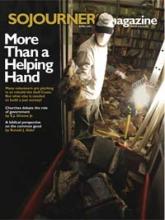Since the industrial revolution, cities often have been seen as the domain of low-income residents, while their surrounding suburbs have been home to middle- and upper-income people. But a new report from The Brookings Institution says that, for the first time, some suburbs in America have become poorer than inner cities. In 1999, according to Two Steps Back: City and Suburban Poverty Trends 1999-2005, about the same percentage of poor people lived in the suburbs as in the cities, but with an economic downturn and concentrated job losses in the Midwest, poverty rose in the suburbs in 2005.
- 12.6 percent: U.S. poverty rate in 2005.
- 4 million: The increase in Americans living below the poverty line between 1999 and 2005.
- n 18.8 percent: The poverty rate in large cities in 2005—twice as high as in the suburbs (9.4 percent).
- 54: The number of large U.S. cities out of the top 100 where poverty rates increased between 1999 and 2005.
- 7: The number of large U.S. cities out of the top 100 where poverty rates declined between 1999 and 2005.
- 17.6 percent: The U.S. child poverty rate in 2005—up from 16.6 percent in 1999.
Source: "Two Steps Back: City and Suburban Poverty Trends 1999-2005" (The Brookings Institution, December 2006); Census 2000; 2005 American Community Survey.
Read the Full Article
